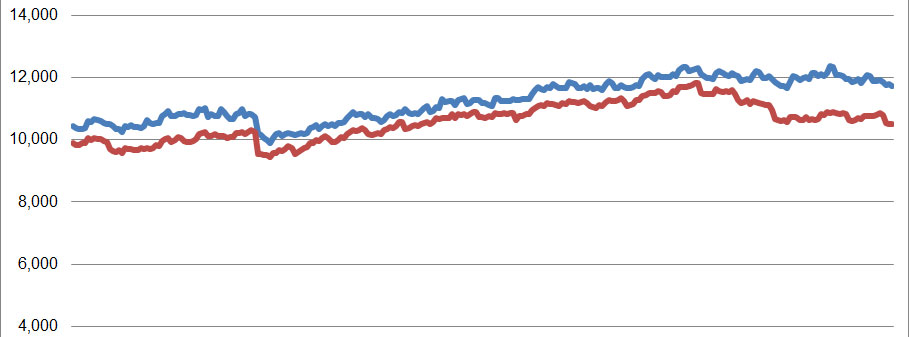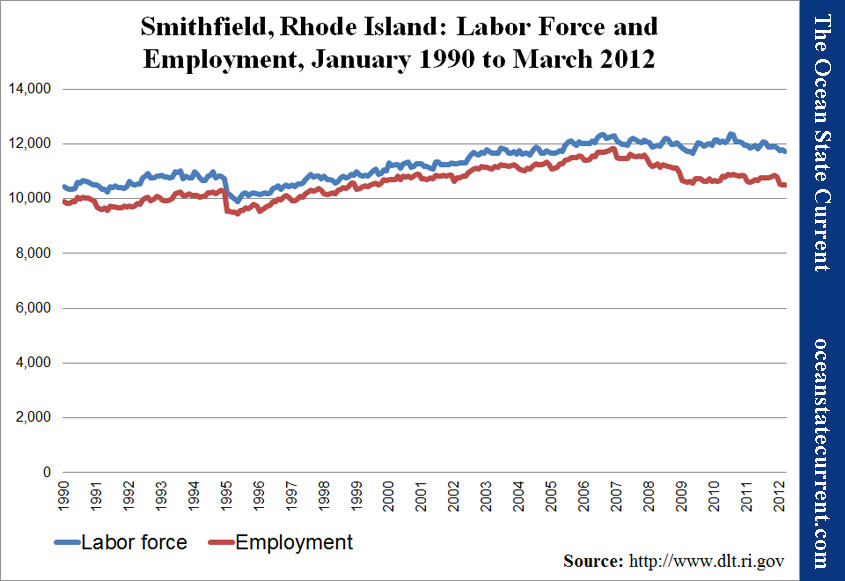State in Decline, Employment in RI Cities and Towns: Smithfield
Smithfield’s unemployment story is one of growth through the last decade, with the number of employed residents falling off precipitously just after the housing bust. Since around 2009, the town’s labor force and employment have both been more or less stagnant.
Still, in 2010, all three of the metrics that the Current has been tracing across Rhode Island were still positive in the town. From the 2000 U.S. Census to the 2010 iteration, Smithfield had seen a 4.0% increase in population, a 7.8% increase in labor force, but only a 0.1% in employment. As a result, the town’s average unemployment rate for that year (not seasonally adjusted) was 10.9%.
The following chart illustrates that the town’s situation hasn’t changed much, since then. However, its slight improvement in unemployment rate results entirely from residents’ dropping out of the labor force (either by moving or just giving up).
Unemployment is represented as the gap between the two lines.
Note on the Data
The population data above comes from the U.S. Census conducted every ten years and is therefore generally considered reliable, to the extent that is used as reference for various government programs and voter districting.
The labor force and unemployment data, however, derives from the New England City and Town Areas (NECTAS) segment of the Local Area Unemployment Statistics (LAUS) of the federal Bureau of Labor Statistics (BLS). A detailed summary of the methodology is not readily available, but in basic terms, it is a model based on and benchmarked to several public surveys. It can be assumed that the sample rate (i.e., the number of people actually surveyed) in each Rhode Island town is very small (averaging roughly 30 people per municipality).
The trends shown, it must be emphasized, are most appropriately seen as trends in the model that generally relate to what’s actually happening among the population but are not an immediate reflection of it. Taking action on the assumption that the exact number of employed or unemployed residents shown corresponds directly to real people in a town would vest much too much confidence in the model’s accuracy.
Be that as it may, the data has been collected and published, and taken a town at a time, it is relatively easy to digest. So, curiosity leads the Current to see it as the best available data to deepen our understanding of trends within Rhode Island. If the findings comport with readers’ sense of how the towns relate to each other, perhaps lessons regarding local and statewide policies may be drawn. If not, then the lesson will be on the limitations of data in our era of information overload.





